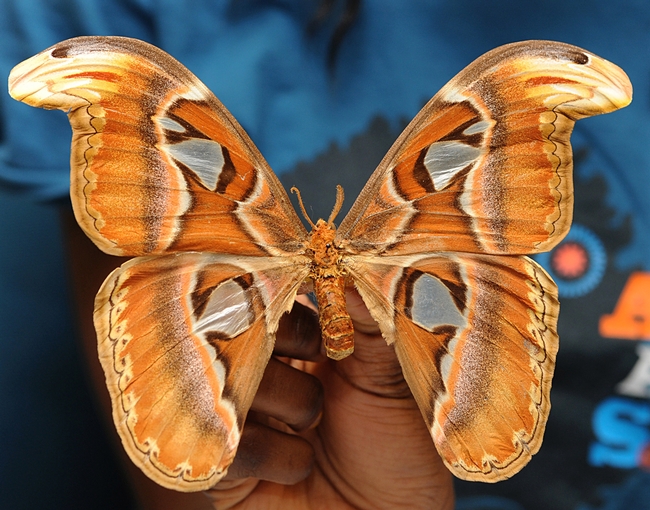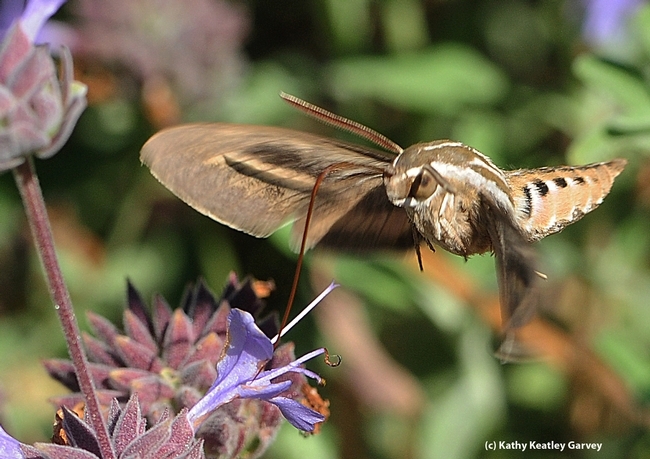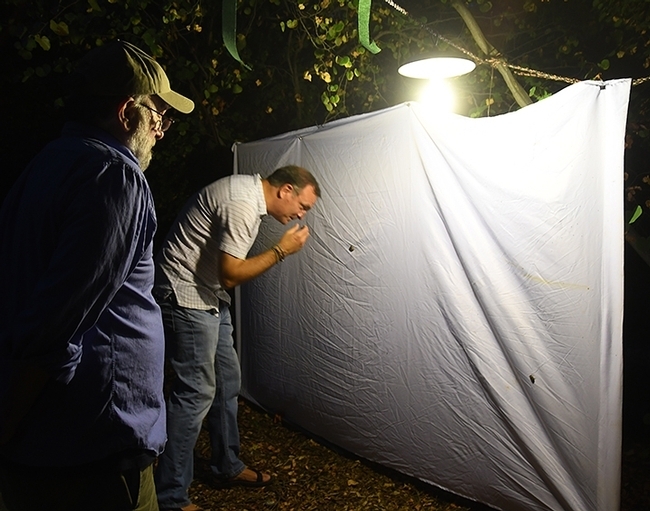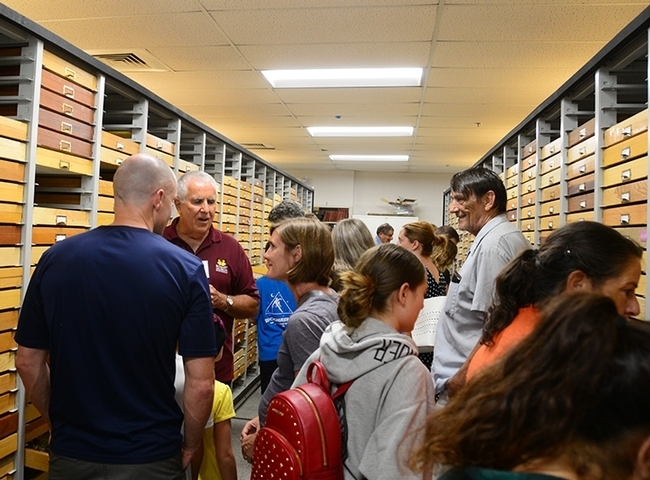- Author: Kathy Keatley Garvey

After a two-year hiatus due toCOVID, it's back by popular demand, said Tabatha Yang, education and outreach coordinator for the Bohart Museum.
It's free, family friendly and open to the public. Inside, visitors will see the Bohart's special moth collection, and outside, visitors will see moths and other insects land on the hanging white sheet of the blacklighting display, comprised of an ultraviolet (UV) light, and a generator.
The Bohart collection includes the Atlas moth, Attacus atlas, the world's largest moth with the greatest wing area of 10 to 12 inches. The Atlas is found in the tropical and subtropical forests of Southeast Asia.
Another large moth on display will be the "bat moth" or "black witch" (Ascalapha odorata), found in Central America, South America, Bahamas and parts of the southwestern United States. In Mexican and Caribbean folklore, it is considered a harbinger of death. The insect played a role in the movie, "Silence of the Lambs" but the name was changed to "Death's-head Hawkmoth."
Folks are invited to bring photos or moth specimens from their house, yard or neighborhood that they would like help in identifying, Yang said.
There will also be a craft activity, cookies, and "hot cocoa for anyone who needs help staying up past their bedtime," Yang quipped.
Back in 2019, before the COVID pandemic, the blacklighting display drew at least 11 different species from five moth families: Tineidae, Tortricidae, Pyralidae, Geometridae, and Noctuidae, according to Bohart associate and "Moth Man" John De Benedictis.
The families represented:
Family Tineidae:
Opogona omoscopa (Opogona crown borer)
Family Tortricidae:
Clepsis peritana
Platynota stultana (omnivorous leafroller)
Cydia latiferreana (filbertworm)
Family Pyralidae:
Achyra rantalis (garden webworm)
Ephestiodes gilvescentella (dusky raisin moth)
Cadra figuliella
Family Geometridae:
Digrammia muscariata
Family Noctuidae:
Spodoptera exigua (beet armyworm)
Spodoptera praefica (western yellow-striped armyworm)
Parabagrotis formais

Moth Night (NMW) "celebrates the beauty, life cycles, and habitats of moths, according to the national website. “Moth-ers of all ages and abilities are encouraged to learn about, observe, and document moths in their backyards, parks, and neighborhoods."
NMW, also celebrated worldwide, is traditionally held a week in July. "NMW offers everyone, everywhere a unique opportunity to become a citizen scientist and contribute scientific data about moths," the website relates. "Through partnerships with major online biological data depositories, NMW participants can help map moth distribution and provide needed information on other life history aspects around the globe."
NMW scientists point out:
- Moths are among the most diverse and successful organisms on earth.
- Estimates show that moth species number anywhere from 150,000 to more than 500,000.
- Their colors and patterns are either dazzling or so cryptic that they define camouflage. Shapes and sizes span the gamut from as small as a pinhead to as large as an adult's hand.
- Most moths are nocturnal, and need to be sought at night to be seen--others fly like butterflies during the day.
- Finding moths can be as simple as leaving a porch light on and checking it after dark. Serious moth aficionados use special lights and baits to attract them.





